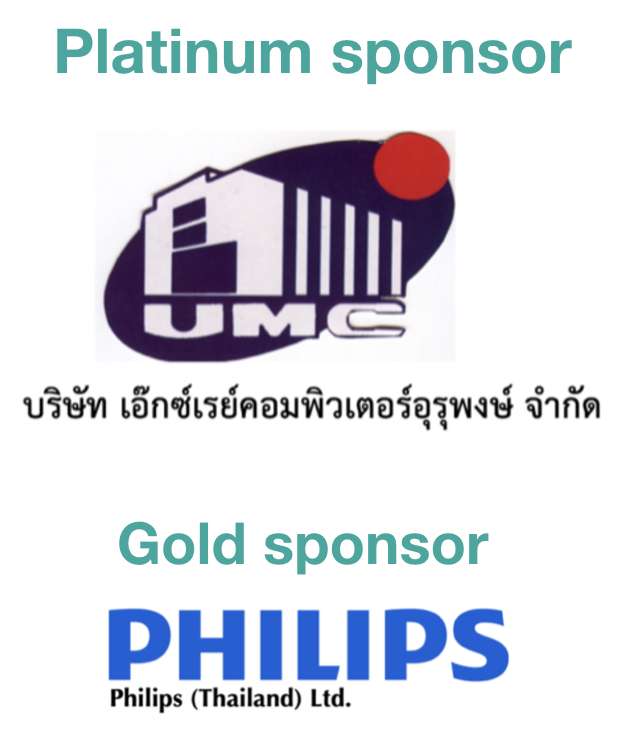Respiratory motion management techniques for radiotherapy of thoracic and upper abdominal tumors at King Chulalongkorn Memorial Hospital
Keywords:
Motion management, deep inspiration breath hold, 3D surface tracking system, real time position management, respiratory gatingAbstract
The radiation therapy precisely targets high doses of radiation and minimizes the risk of radiation exposure to neighboring healthy tissue of the modern radiotherapy machines and treatment planning techniques has been well demonstrated. However, it presents unique challenges for accurate planning and delivery especially in the lungs and upper abdomen where respiratory motion can be significantly confounding accurate targeting and avoidance of normal tissues. In this paper, we explain how to manage breathing motions in the field of division of Radiation Oncology, Department of Radiotherapy, King Chulalongkorn Memorial Hospital to reduce the effects of breathing motion, which will allow precise irradiation and can reduce the amount of radiation on Organs at risk and normal tissues, which will result in fewer side effects from radiation
Downloads
References
Seppenwoolde Y, Shirato H, Kitamura K, et al. Precise and real-time measurement of 3D tumor motion in lung due to breathing and heartbeat, measured during radiotherapy. Int J Radiat Oncol Biol Phys. 2002; 53:822–834.
Keall PJ, Mageras GS, Balter JM, et al. The management of respiratory motion in radiation oncology report of AAPM Task Group 76. Med Phys. 2006; 33:3874–3900
Hanley J, Debois MM, Mah D, et al. Deep inspiration breath-hold techniquefor lung tumors: The potential value of target immobilization and reduced lung density in dose escalation. Int J Radiat Oncol Biol Phys.1999; 45:603–611.
Balter JM, Lam KL, McGinn CJ, Lawrence TS, Ten Haken RK. Improvement of CT-based treatment-planning models of abdominal targets using static exhale imaging. Int J Radiat Oncol. 1998; 41:939–943.
Davies SC, Hill AL, Holmes RB, Halliwell M, Jackson PC. Ultrasound quantitation of respiratory organ motion in the upper abdomen. Br J Radiol. 1994; 67:1096–102.
Bussels B, Goethals L, Feron M, et al. Respiration-induced movement of the upper abdominal organs: A pitfall for the three-dimensional conformal radiation treatment of pancreatic cancer. Radiother Oncol. 2003; 68:69–74.
Liu HH, Balter P, Tutt T, et al. Assessing respiration-induced tumor motion and internal target volume using four-dimensional computed tomography for radiotherapy of lung cancer. Int J Radiat Oncol Biol Phys. 2007; 68:531–540.
Langen KM, Jones DTL. Organ motion and its management. Int J Radiat Oncol Biol Phys. 2001; 50:265–278.
Brandner ED, Wu A, Chen H, et al. Abdominal organ motion measured using 4D CT. Int J Radiat Oncol Biol Phys. 2006;65:554–560.
Ezhil M, Vedam S, Balter P, et al. Determination of patient-specific internal gross tumor volumes for lung cancer using four-dimensional computed tomography. Radiat Oncol. 2009; 4:4.
Ahn S, Yi B, Suh Y, et al. A feasibility study on the prediction of tumour location in the lung from skin motion. Br J Radiol. 2004; 77:588–596.
Jeffrey D Bradley, Chen Hu, Ritsuko R Komaki, et al. Long-Term Results of NRG Oncology RTOG 0617: Standard- Versus High-Dose Chemoradiotherapy with or without Cetuximab for Unresectable Stage III Non-Small-Cell Lung Cancer. J Clin Oncol. 2020 Mar 1;38(7):706-714.
Chumsuwan N, Kowittheeraphong N, Ruedoodee M, Sae-tan M. Setup error assessment of female breast cancer radiotherapy at Songklanagarind Hospital. Thai J Rad Tech. 2022;47(1):35-42.
Tongngarm W, Kornsopa S, Saenchon P, Pongsak N, Yingsom N, Lalomchai K, Waisarikam Y, Yabsantia S. Setup errors and CTV to PTV margin for upper abdominal cancer with intensity modulated radiotherapy technique using electronic portal imaging device in Sakon Nakhon Hospital. Thai J Rad Tech. 2024;49(1):1-13.

Downloads
Published
How to Cite
Issue
Section
License
Copyright (c) 2024 The Thai Society of Radiological Technologists

This work is licensed under a Creative Commons Attribution-NonCommercial-NoDerivatives 4.0 International License.
บทความที่ได้รับการตีพิมพ์เป็นลิขสิทธิ์ของสมาคมรังสีเทคนิคแห่งประเทศไทย (The Thai Society of Radiological Technologists)
ข้อความที่ปรากฏในบทความแต่ละเรื่องในวารสารวิชาการเล่มนี้เป็นความคิดเห็นส่วนตัวของผู้เขียนแต่ละท่านไม่เกี่ยวข้องกับสมาคมรังสีเทคนิคแห่งประเทศไทยและบุคคลากรท่านอื่น ๆในสมาคม ฯ แต่อย่างใด ความรับผิดชอบองค์ประกอบทั้งหมดของบทความแต่ละเรื่องเป็นของผู้เขียนแต่ละท่าน หากมีความผิดพลาดใดๆ ผู้เขียนแต่ละท่านจะรับผิดชอบบทความของตนเองแต่ผู้เดียว




